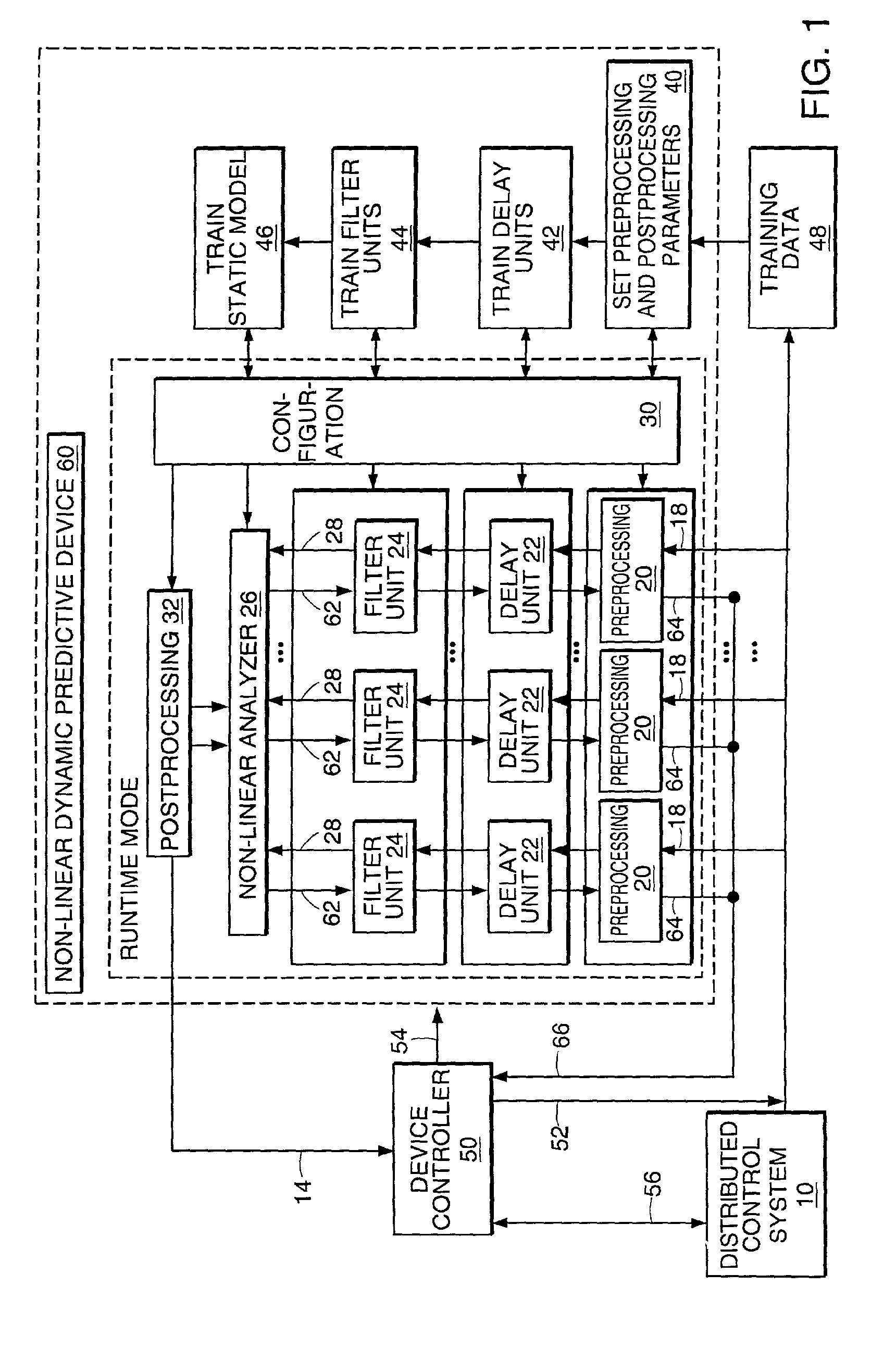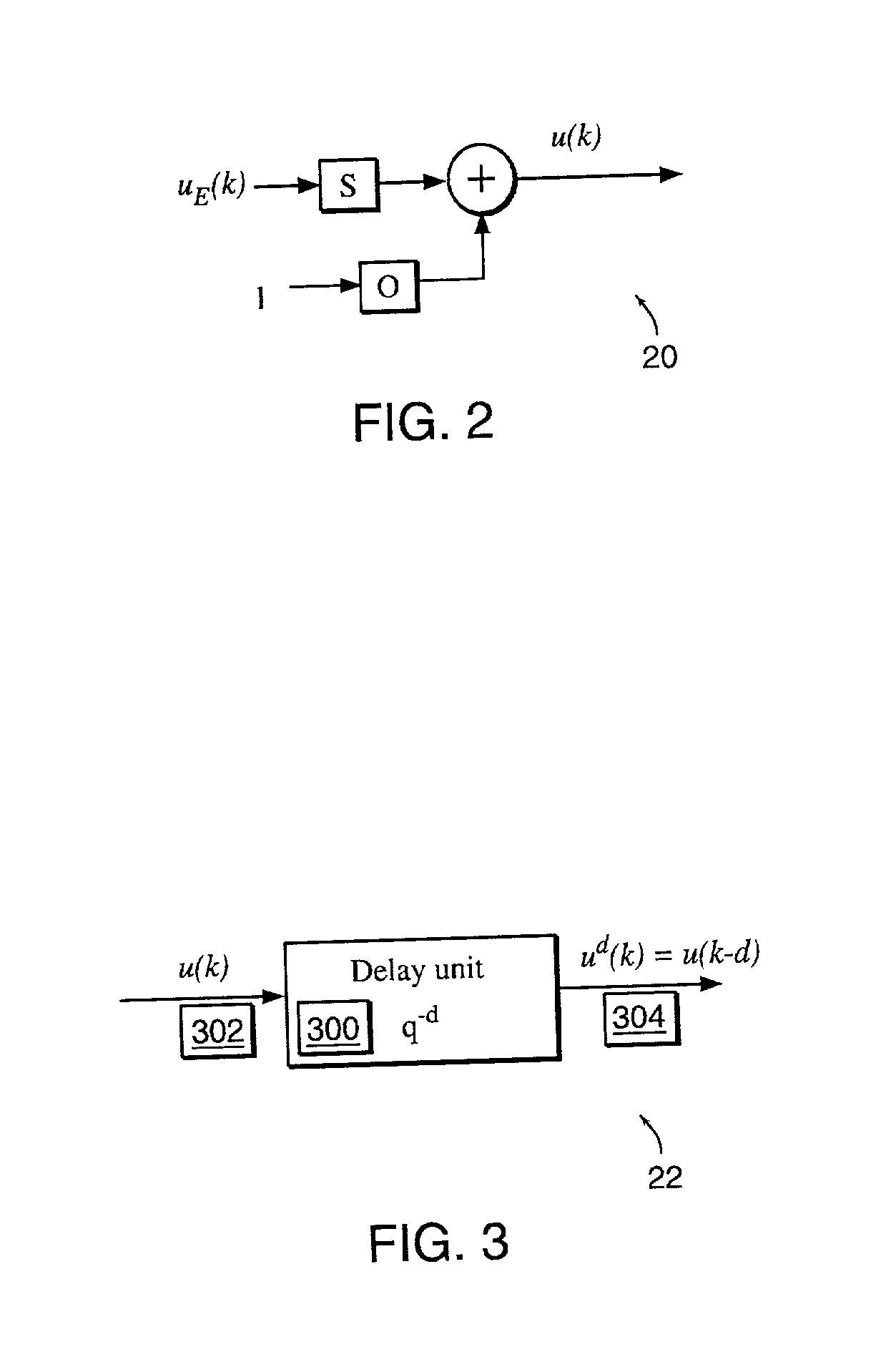Non-linear dynamic predictive device
a dynamic prediction and non-linear technology, applied in adaptive control, process and machine control, instruments, etc., can solve the problems of over-parameterization of models, exponential growth of parameters to be identified, and over-parameterization problem exacerbated, etc., to achieve the effect of sufficient accuracy
- Summary
- Abstract
- Description
- Claims
- Application Information
AI Technical Summary
Benefits of technology
Problems solved by technology
Method used
Image
Examples
Embodiment Construction
[0035] FIG. 1 is an overall block diagram of the invention and its context. An external device controller (50) synchronizes the flow of data to and from the predictive device via the data paths (18), (14), and (64). The device controller also controls the mode of operation and the path stepping of the predictive device via the control path (54). The external device controller may also communicate with a DCS (10) or other data / control system both for requesting data and for requesting control changes to the modeled process; however the exact external context and configuration of the device controller is beyond the scope of this application.
V.1 Forward Runtime Operation of the Prediction Device
[0036] The figures and equations in this detailed description refer to an index k that represents a data point in a sequence of data points. This index has different meanings depending on whether the forward operational mode of the device is prediction mode or horizon mode.
[0037] In prediction m...
PUM
 Login to View More
Login to View More Abstract
Description
Claims
Application Information
 Login to View More
Login to View More - R&D
- Intellectual Property
- Life Sciences
- Materials
- Tech Scout
- Unparalleled Data Quality
- Higher Quality Content
- 60% Fewer Hallucinations
Browse by: Latest US Patents, China's latest patents, Technical Efficacy Thesaurus, Application Domain, Technology Topic, Popular Technical Reports.
© 2025 PatSnap. All rights reserved.Legal|Privacy policy|Modern Slavery Act Transparency Statement|Sitemap|About US| Contact US: help@patsnap.com



